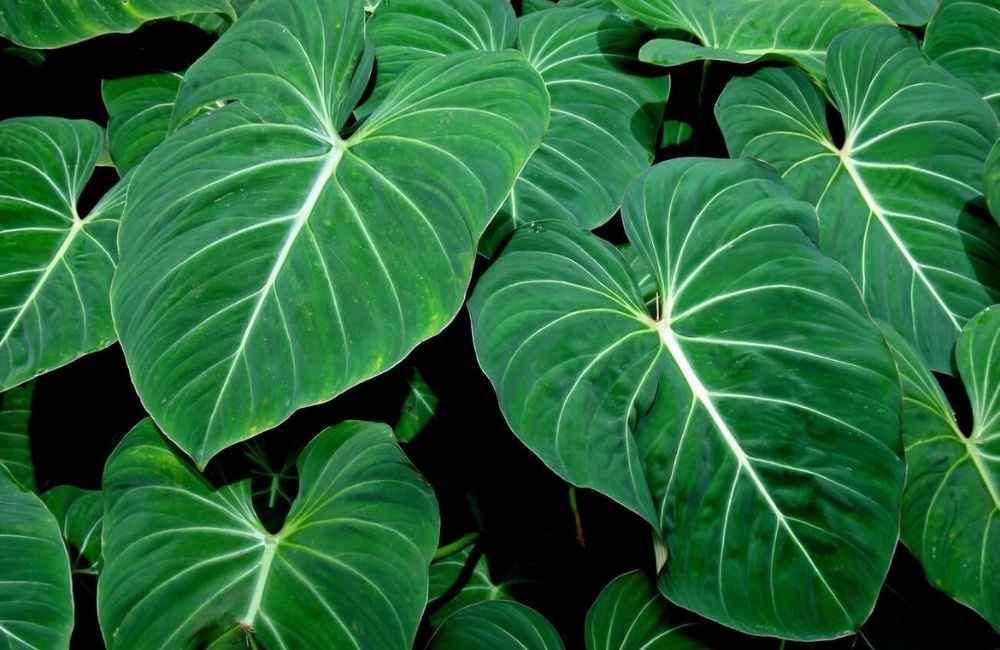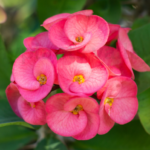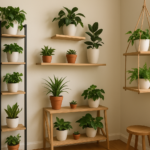Are you ready to embark on a journey into the lush world of tropical plants? Look no further than the mesmerizing Philodendron gloriosum. A plant like this will captivate your attention and leave you speechless with its velvety leaves and intricate patterns. Known for its rarity and beauty, the Philodendron Gloriosum has become a favorite among plant enthusiasts and collectors.
What Is Philodendron gloriosum?

Philodendron gloriosum is a member of the family Araceae and the genus Philodendron. Colombia, Mexico, Brazil, Peru, Ecuador, and Venezuela are countries that natively grow it as a crawling, terrestrial plant. This plant is known for its heart-shaped leaves with a velvety surface, pink margins, and striking pale green, white, or pinkish veins.
Regarding care, the Gloriosum prefers bright, indirect light, and well-draining soil that contains ingredients like peat, perlite, charcoal, and orchid bark. It’s important to keep the soil slightly damp when watering, but make sure the top 1-2 inches of soil are dry before watering again. It is worth noting that the Philo gloriosum is toxic to people and pets. Therefore, keeping it out of reach of children and animals is crucial.
SPECIFICATIONS
Common Name: Anthurium Gloriosum, Velvet Philodendron, Creeper Plant
Botanical Name: Philodendron gloriosum
Family: Araceae
Plant Type: Tropical houseplant
Foliage: Large, velvety, heart-shaped leaves with prominent veins. The leaves are typically dark green with white or silvery veining.
Mature Size: Up to 2.5 feet tall
Sun Exposure: Partial
Soil Type: Well-drained
Soil pH: Acidic, Neutral
Bloom Time: Rarely blooms indoors
Flower Color: N/a
Hardiness Zones: 10-11 (USDA)
Where to buy: Try our list of Amazon
Native Area: South America:
Toxicity: Toxic to people,1 toxic to pets2
Philodendron gloriosum types
There are various types of Philo gloriosum. This popular plant species is known for its stunning heart-shaped leaves and velvety texture. Each type of philo gloriosum may differ in leaf coloration, size, and overall appearance. Whether you’re looking for a Philo Gloriosum with vibrant green leaves or one with unique variegated patterns, there are options to suit different preferences. With their striking beauty, Philodendron Gloriosum plants are highly sought after by plant enthusiasts and collectors alike.
- Philodendron gloriosum ‘Dark Form’: Darker, rounder leaves with fine veining and a reddish outline on its leaf edges.
- Philodendron gloriosum ‘Round Form’: Rounder foliage without a point at the bottom.
- Philodendron gloriosum ‘Zebra’: Veins are more pronounced and bright white.
- Philodendron gloriosum ‘Pink Back’: Leaves and veins on the back are pale pink.
- Variegated Philodendron gloriosum: Yellow or cream variegation interspersed with normal foliage.
Philodendron gloriosum zebra vs gloriosum
When comparing Philodendron Gloriosum Zebra and Gloriosum, there are a few key differences to consider. Both plants belong to the Philodendron genus and are known for their attractive foliage. However, the Gloriosum Zebra variety stands out with its unique zebra-like patterns on its leaves, adding a touch of exotic beauty to any indoor space. On the other hand, Gloriosum boasts large, heart-shaped leaves with a velvety texture, creating a luxurious and lush appearance. Whether you prefer the striking patterns of Gloriosum Zebra or the velvety elegance of Gloriosum, both plants will make a statement in your plant collection.
How To Take Care Of A Philodendron Gloriosum?

Caring for a Philodendron Gloriosum involves providing the right conditions and regular maintenance to ensure its health and growth. Here are the steps to care for your Philo Gloriosum:
Light requirements for a Philodendron gloriosum
The light requirements for a Philodendron Gloriosum are essential for its optimal growth and health. This magnificent plant thrives in moderate to bright indirect light. It is important to place the gloriosum philodendron in a location where it receives bright, filtered light, but not direct sunlight, as this can cause leaf burn. The right light ensures the plant can photosynthesize effectively, promoting lush foliage and vibrant growth. Remember to place your philodendron glorious vs gloriosum near a window with sheer curtains or in a well-lit room to meet its light requirements and enjoy its stunning beauty.
The best type of soil for a Philodendron Gloriosum
The ideal soil type for a Philodendron gloriosum is rich, well-draining soil. This tropical plant thrives in a soil mix that is loose and airy, allowing for proper root development and preventing waterlogging. A combination of peat moss, perlite, and orchid bark is recommended for adequate moisture retention while ensuring excellent drainage. Additionally, adding organic matter such as compost or leaf mold can enhance the soil’s fertility and promote healthy growth of the Philodendron gloriosum. This stunning plant will flourish and showcase its vibrant foliage with the right type of soil.
How to water a Philodendron Gloriosum?
Properly watering a Philodendron gloriosum is essential for its overall health and growth. Understanding the watering needs of this plant is crucial to prevent overwatering or underwatering. When watering a Philodendron Gloriosum, keeping the soil evenly moist but not waterlogged is recommended. Allow the top inch of soil to dry out before watering again. The soil should drain well and the pot should have drainage holes to prevent waterlogging. Temperature and humidity should be considered when adjusting watering frequency. By following these steps, you can ensure the proper watering routine for your Philodendron Gloriosum.
Fertilizing your Philodendron Gloriosum
Fertilizing your Philodendron gloriosum is essential in ensuring its healthy growth and vibrant foliage. Providing the right nutrients can enhance the plant’s overall health and promote lush green leaves. When it comes to fertilizing your large philodendron gloriosum, choosing a balanced fertilizer rich in nitrogen, phosphorus, and potassium is important. This will provide the necessary elements for strong root development and robust foliage. You can also maintain a steady supply of nutrients over time with organic fertilizers or pellets. Follow the fertilizer package directions and avoid over-fertilizing, which can result in leaf burn. Regularly fertilizing your Gloriosum will help it thrive and bring natural beauty to your indoor space.
The best temperature and humidity for a Philodendron Gloriosum
Temperature:
Maintain the temperature between 60 °F and 80 °F (18 °C and 27 °C) year round. This plant does not tolerate temperatures below 50°F (10°C) and is sensitive to cold drafts.
Humidity:
Maintain a humidity level of 60% or higher if possible. These plants are accustomed to high humidity in their natural habitat, and providing similar conditions will promote healthy growth. You can increase humidity by using a humidity tray room humidifier, misting the plant regularly, or placing it in a bathroom or kitchen where humidity tends to be higher.
Pruning your Philodendron Gloriosum
Pruning your Philodendron gloriosum is essential to maintain its health and promote optimal growth. Following proper pruning techniques can help shape the plant, remove dead or damaged foliage, and encourage new growth. When pruning your Philodendron Gloriosum, it is important to use clean and sharp pruning shears to prevent any infections or damage. Start by identifying the stems that need pruning and make clean cuts just above a leaf node or bud. This will stimulate the plant to produce new shoots and maintain its compact shape. Regular pruning sessions, especially during the growing season, will keep your gloriosum philodendron thriving and vibrant.
How to report philodendron gloriosum?
Pruning your Philodendron gloriosum is essential to maintain its health and promote optimal growth. Following proper pruning techniques can help shape the plant, remove dead or damaged foliage, and encourage new growth. When pruning your gloriosum philodendron, it is important to use clean and sharp pruning shears to prevent any infections or damage. Start by identifying the stems that need pruning and make clean cuts just above a leaf node or bud. This will stimulate the plant to produce new shoots and maintain its compact shape. Regular pruning sessions, especially during the growing season, will keep your gloriosum philodendron thriving and vibrant.
How to propagate philodendron gloriosum?
Propagating philodendron gloriosum is a great way to expand your plant collection. To propagate this stunning plant, you can choose between stem cuttings and division.
Select a healthy stem with at least two nodes for stem cuttings and remove leaves from the bottom. Place the cutting in a glass of water or a well-draining potting mix, ensuring the node is submerged or buried. Keep the cutting in a warm and humid environment, misting it regularly.
Alternatively, you can divide an established gloriosum philodendron by carefully separating its roots and planting each section in a separate pot. Ensure adequate light, water, and nutrients to encourage successful propagation. With these simple steps, you can propagate your philodendron gloriosum and enjoy more of its beautiful foliage.
Common Leaf Problems of Philodendron Gloriosum
Philodendron Gloriosum is an impressive tropical houseplant with heart-shaped leaves that are deep green with prominent white veins. The plant is relatively low-maintenance, but some leaf problems can occur. Here, we’ll explore some common leaf problems affecting the Philodendron Gloriosum and how to fix them.
Yellowing Leaves: Yellowing leaves can indicate overwatering, underwatering, or nutrient deficiencies. Ensure that you provide the right amount of water and allow the soil to dry slightly between waterings. If root rot is suspected, consider repotting the plant into fresh, well-draining soil.
Brown Leaf Tips: Brown spots or edges on the leaves may result from improper watering, especially if the water contains excessive salts or chemicals. It’s important to water the plant with filtered or distilled water to prevent mineral buildup on the leaves. Increasing humidity levels, providing filtered light, and avoiding direct sun exposure can help mitigate this issue.
Leaf curling: Curling leaves can indicate underwatering, low humidity, or pest infestation. Checking the moisture levels in the soil, increasing humidity through misting or using a humidifier, and inspecting the plant for pests like spider mites can help resolve this problem. Inspect the undersides of the leaves for tiny webs or pests, and treat the plant with neem oil or insecticidal soap if necessary.
Brown Spots or Lesions: A brown spot or lesion may indicate a fungal or bacterial infection. To prevent the spread of disease, isolate the affected plant from your other houseplants if you notice such issues. Remove affected leaves, increase air circulation, and reduce humidity to create an environment that is less conducive to pathogenic growth. If the problem persists, you may consider using a fungicide or bactericide.
Pests And Diseases
There are a variety of pests and diseases that can affect Philodendron gloriosum. Pests and diseases that can affect gloriosum philodendron and how they can be treated include:
Pests
- Spider Mites: A spider mite is a small insect that can cause leaf damage such as stippling, webs, and webbing.
- Mealybugs: Mealybugs are small, white, cottony insects that often gather in leaf joints and along stems.
- Aphids: Aphids are small, soft-bodied insects that feed on the sap of plants.
- Scale Insects: Scale insects appear as small, round, or oval bumps on stems and leaves.
Diseases
- Leaf Spot: Leaf spot is a fungal disease characterized by brown or black spots on the leaves.
- Powdery Mildew: Powdery mildew presents as a white, powdery substance on the leaves.
- Root Rot: Root rot is a common issue caused by overwatering, leading to rotting roots and a weakened plant.
- Bacterial Leaf Spot: Bacterial leaf spot causes dark, water-soaked lesins on the leaves.
How to get bigger leaves on philodendron gloriosum?
To enhance the growth of your philodendron gloriosum and achieve bigger leaves, you can employ several key strategies. First and foremost, ensure that your plant receives ample bright, indirect light, which is crucial for optimal leaf development. Maintaining a consistent watering schedule is vital to prevent under or overwatering, which can hinder leaf growth. Providing a well-draining soil mix rich in organic matter and regularly fertilizing with a balanced, diluted fertilizer will promote healthy leaf formation. Finally, consider supplementing your philodendron’s glorious growth with a humidifier or misting its leaves, as this tropical plant thrives in high-humidity environments. By implementing these practices, you can encourage your gloriosum philodendron to produce more vibrant leaves.
The benefits of having Philodendron Gloriosum as a houseplant
Philodendron Gloriosum, a popular houseplant, provides several benefits to its owners. One of the key advantages of having gloriosum philodendron as a houseplant is its ability to improve indoor air quality. This plant is known to purify the air by filtering toxins and releasing oxygen effectively. Additionally, gloriosum philodendron is relatively low-maintenance, making it an ideal choice for busy individuals or those needing a green thumb. Its striking foliage, characterized by heart-shaped leaves with velvety texture and deep green coloration, adds a touch of natural beauty to any space. Whether it’s enhancing the aesthetics of a room or providing cleaner air, philo gloriosum is truly a remarkable houseplant to have.
Frequently Asked Questions (FAQs)
Why is the Philodendron Gloriosum so expensive?
The Philodendron gloriosum is often considered expensive due to several factors. The gloriosum is native to the rainforests of South America, particularly Brazil and Colombia. Its limited distribution in the wild makes it relatively hard to find and cultivate.
Additionally, the philodendrum gloriosum has unique and visually striking characteristics, making it highly desirable among plant enthusiasts. Its large, heart-shaped leaves are adorned with velvety, iridescent foliage featuring vibrant green coloration and prominent white veins. The Philodendron Gloriosum’s high price can be attributed to its rarity, unique aesthetics, slow growth rate, and increasing demand among plant enthusiasts.
Is Philodendron gloriosum toxic?
Yes, Philodendron gloriosum is toxic to humans and animals if ingested. Calcium oxalate crystals in it can cause mouth, throat, and digestive system irritation and swelling. Children and pets should be kept out of reach of this plant in order to avoid accidental ingestion.
Why Is my Philodendron gloriosum dying?
Closely observe your Philodendron gloriosum and address any potential issues promptly. Adjusting the lighting conditions, improving watering practices, eliminating pests, and providing proper nutrients can help revive a struggling plant. If the problem persists, consult a plant expert or horticulturist.
Is Philodendron Gloriosum hard to care for?
Philodendron Gloriosum is generally considered a relatively easy plant to care for. To thrive, it requires specific care, like any houseplant. Here are a few key points to keep in mind:
- Light: philodendrum gloriosum prefers bright, indirect light. Avoid exposing it to direct sunlight, as this can scorch its leaves. Placing it near a north or east-facing window is usually ideal.
- Watering: This plant likes to be kept consistently moist but not overly watered. Allow the top inch of soil to dry out between waterings and ensure proper drainage in the pot.
- Humidity: Philodendron Gloriosum appreciates high humidity levels. Mist the leaves regularly or place the pot on a tray filled with pebbles and water to increase humidity around the plant.
By following these guidelines and providing your Philodendron Gloriosum with a suitable environment, you should be able to enjoy its beautiful foliage without much difficulty.
Is Philodendron Gloriosum a climber or creeper?
Philodendron Gloriosum is primarily considered a climber rather than a creeper. As a member of the Araceae family, this tropical plant has aerial roots that allow it to attach itself to nearby structures and climb upwards. Its long, vining stems can reach impressive lengths, making it an ideal choice for those looking to create vertical greenery in their homes or gardens.
Is Philodendron Gloriosum a climbing plant?
Yes, Philodendron gloriosum is a climbing plant. As a climbing plant, Philodendron Gloriosum has aerial roots that allow it to attach itself to trees or other support structures in its natural habitat. These roots help the plant climb and reach sunlight in the dense forest canopy. However, when grown indoors as a houseplant, it can also be trained to grow on moss poles or trellises for support and vertical growth.
Is philodendron gloriosum rare?
Yes, Philodendron gloriosum is considered to be a rare plant. It is highly sought after by plant enthusiasts and collectors due to its unique and striking foliage. The leaves of Philodendron gloriosum are velvety, heart-shaped, and have prominent veining, which makes it a desirable addition to any plant collection. However, its rarity also contributes to its higher price than more common houseplants.
Conclusion
The Philodendron Gloriosum is a truly remarkable plant that captivates with its unique foliage and striking appearance. Its large, heart-shaped leaves, adorned with a velvety texture and stunning silver veins, make it a standout addition to any indoor green space. Beyond its aesthetic appeal, this philodendron also boasts air-purifying qualities, helping to create a healthier environment. The Philodendron Gloriosum can thrive and bring natural beauty into your home or office with proper care and attention. Whether you are a seasoned plant enthusiast or a beginner looking to start your indoor garden, the philo gloriosum is an elegant and eye-catching plant choice.
You may also like Philodendron Orange Marmalade







